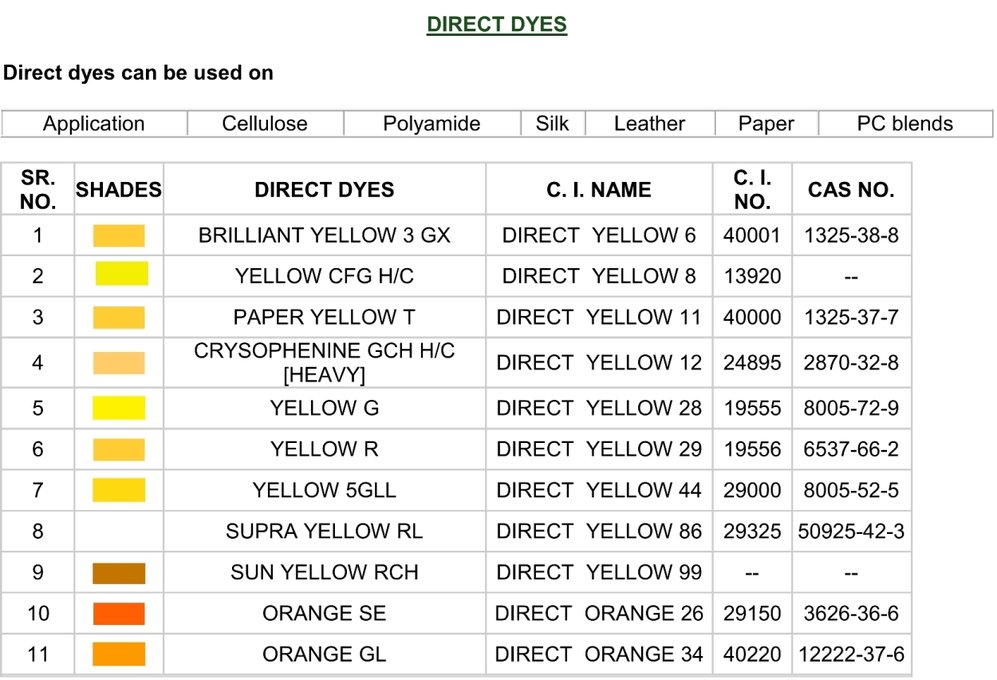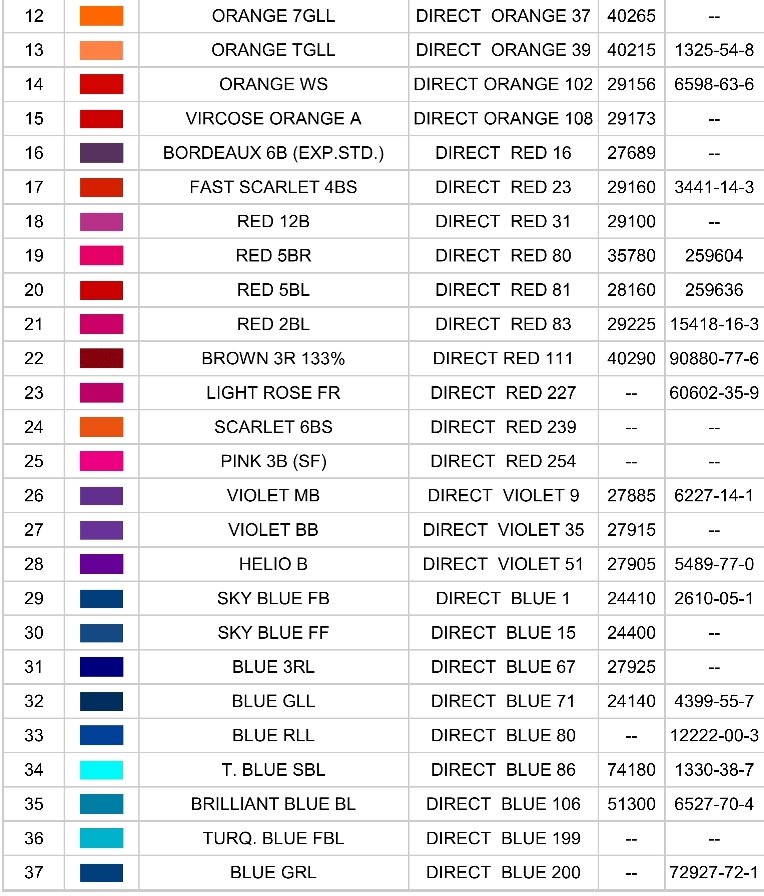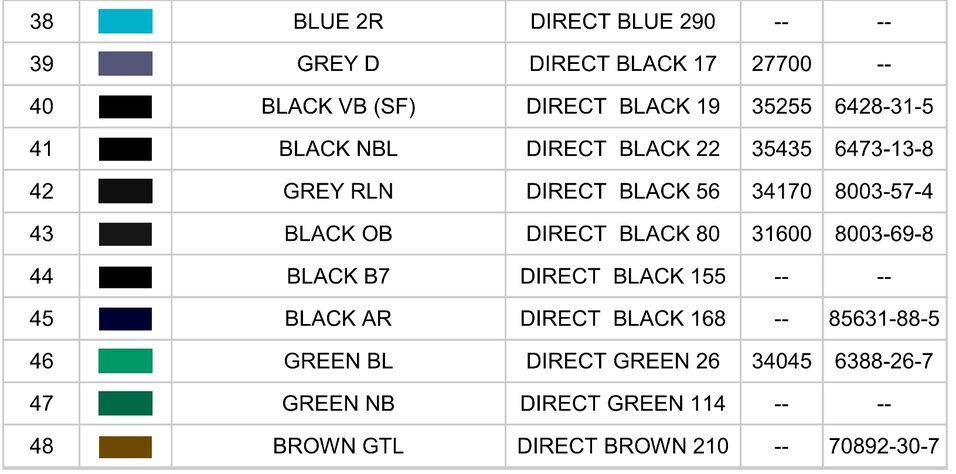Direct dyes are a class of synthetic dyes that are water-soluble and can be directly applied to cellulose fibers such as cotton, viscose, rayon, and linen without requiring the use of a mordant (a substance that helps fix the dye to the fiber). These dyes are called "direct" dyes because they have an affinity for cellulose fibers and can easily penetrate and dye them without the need for additional chemicals.
Direct dyes are known for producing a wide range of colors, including bright and vibrant shades. They are often used in the textile industry for dyeing natural fibers, particularly cotton, which is one of the most widely used fibers in the world.
The dyeing process with direct dyes typically involves preparing a dye bath by dissolving the dye in hot water and then immersing the textile material into the dye bath. The dye molecules penetrate the fibers and form bonds with them, resulting in coloration. After dyeing, the material may undergo additional steps such as rinsing and washing to remove excess dye and improve color fastness.
Direct dyes are relatively easy to use and are suitable for a range of dyeing techniques, including immersion dyeing, dip dyeing, and even tie-dyeing. However, they are known to have less wash and light fastness compared to some other types of dyes, which means that the colors may fade over time with exposure to sunlight and repeated washing.
Overall, direct dyes are popular for their ease of use, affordability, and ability to produce a wide range of colors on cellulose fibers without the need for additional chemicals.





